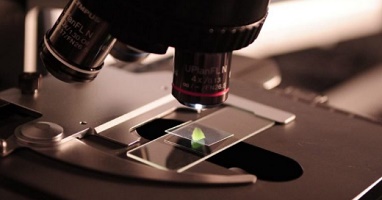What is DNA?
We explain what DNA is and why it is essential for life. Structure, DNA replication and differences between DNA and RNA.
-
What is DNA?
DNA or deoxyribonucleic acid is an essential polymer for life , found inside all the cells of living things and inside most viruses . It is a complex, long protein, in which all the individual’s genetic information is stored, that is, the instructions for the synthesis of all the proteins that make up your organism: it could be said that it contains the molecular instructions for the assembly of a living being.
The minimum units of this genetic information are called genes and consist of a specific sequence of the nucleotides that make up the DNA, and also allow their hereditary transmission, something vital for the evolution of life. In addition, these structures also contain information regarding how and when the synthesis of the basic components of the cells should occur.
The DNA is contained in the cells , either dispersed in their cytoplasm (in the case of prokaryotic organisms : bacteria and archaea) and within the cell nucleus (in the case of eukaryotes : plants, animals, fungi). For its decoding and use as a template, the intervention of RNA or ribonucleic acid, which reads the structure and uses it as a template, is required in a process called transcription / translation.
It is possible to say that the DNA of each individual is unique and different, product of the combinatorial of the genetic codes of their parents in a randomized process. This, of course, in the organisms of sexual reproduction, in which each parent contributes half of their genome to manufacture a new individual . In the case of unicellular organisms of asexual reproduction, the DNA molecule reproduces itself in a process called replication .
The genetic content of DNA is extremely valuable for life, and despite this it is possible that it suffers damage due to contact with mutagens : ionizing radiation, certain chemical elements or even some drugs (as in the case of chemotherapy), which would lead to Transcription errors at the time of cell synthesis. This can lead to illness and death of the individual, or also to the inherited transmission of defective structures, giving rise to descendants with congenital defects.
-
DNA structure
The DNA molecule is a long strip of units called nucleotides , which in turn consist of a sugar molecule (in this case deoxyribose: C 5 H 10 O 4 ), a nitrogen base (which can be adenine, guanine, cytosine or thymine), and phosphate group that serves as a link between nucleotides. Hence, each nucleotide is distinguished from the others in the nitrogen base it possesses, and that together they develop a chain called a DNA sequence and that can be transcribed using the initial of each base, for example: ACTAGTCAGT …
The DNA also has a double helix shape , wound on itself in three different patterns (called A, B and Z), according to its sequence, number of bases and specific function. This structure is produced due to the union of two strips of nucleotides by hydrogen bonds.
-
Replication of DNA

Replication is the process by which a DNA molecule generates two identical to itself , and is key in cell reproduction, since all cells in the body must have the exact same genome (as in the reproductive organisms asexual, which are practically clones of each other).
The process involves the separation of the two strands of DNA , each of which will function as a template to synthesize a new partner. If all goes well, in the end there will be two identical molecules of the original DNA, both in double helix. Hence, replication is key to inheritance.
Three types of DNA replication are assumed:
- Semiconservative . As described above, the strands are separated and a new one is synthesized from each of the old ones.
- Conservative . It would take place if the two old strands, after serving as a mold, rejoined their old companion and in the end there was an entirely new DNA molecule, next to the old one that would be reconstituted.
- Dispersive . It would happen if the resulting propellers were composed of fragments of old and new DNA.
-
Differences between DNA and RNA
DNA and RNA are similar nucleotide chains , but they differ, as the name implies, in the type of sugar present in their structure: deoxyribose and ribose, respectively.
In addition, RNA is almost four times larger than DNA , and is composed of a single helix, rather than two. This distinction is also functional, obviously, because DNA contains the genetic template and RNA is responsible for executing or transporting it.





